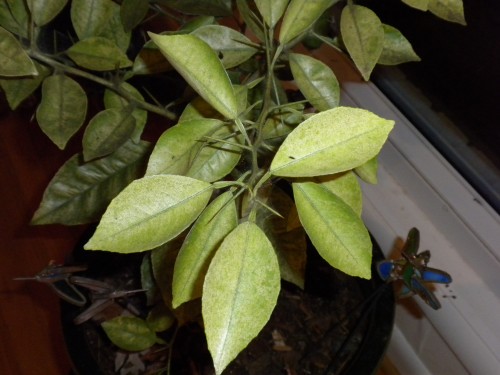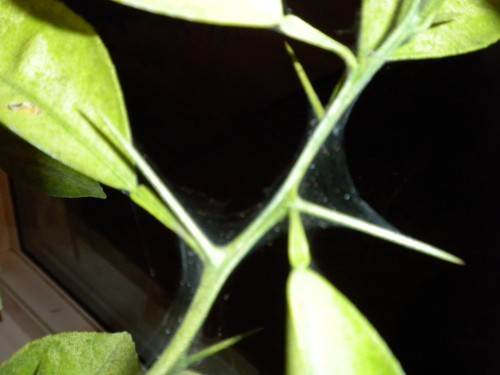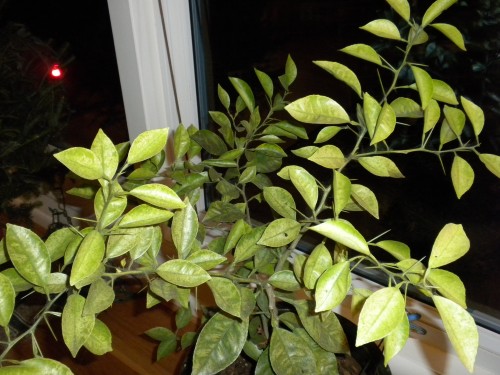





Q: Our 8-year-old son was 5 when he stuck a seed from his Clementine orange into a flower pot with old potting soil in it. We all kidded him, telling him that it would never grow. And just like in the book about the little boy with the carrot seed, he took care to water it from time to time, and endured our kidding. A couple of months later, he announced that he had a clementine tree. Sure enough, he did. It has grown very well, sitting out on our patio during warm months and coming inside to the living room window for winter. We have repotted twice, as it has outgrown pots, as well as our expectations. It has always had lustrous deep green, slightly waxy leaves, and the typical sharp thorns.
Late this summer, the leaves on one small branch become mottled turning yellow and dry. We thought that plant had gotten too dry, and we watered it well over the next couple of weeks. This fall, we moved it into the living room. Over the past couple of months, all the leaves have progressed to the same mottled appearance, some are pale, others more yellow, and all are drying. In addition, in the past couple of weeks, there are tiny webs at some of the junctions of branches and leaves, with very small bugs in the webs.
Any ideas about the cause?
A: Your son will surely become a great gardener as a result of his success! However, teach him that insects and mites love citrus trees just as much as we do.
This is a classic case of spider mite infestation. These fast-breeding creatures suck sap from the leaves and make tiny webs for protection.
The best control comes from alternated weekly sprays of commercial (not home-made) insecticidal soap and horticultural oil insecticide.
Spraying is a good job for a kid: just make sure everything on the plant is sprayed and put newspaper underneath so the floor isn’t damaged.

spider mite on clementine

spider mite on clementine

spider mite on clementine
Copyright © www.100flowers.win Botanic Garden All Rights Reserved